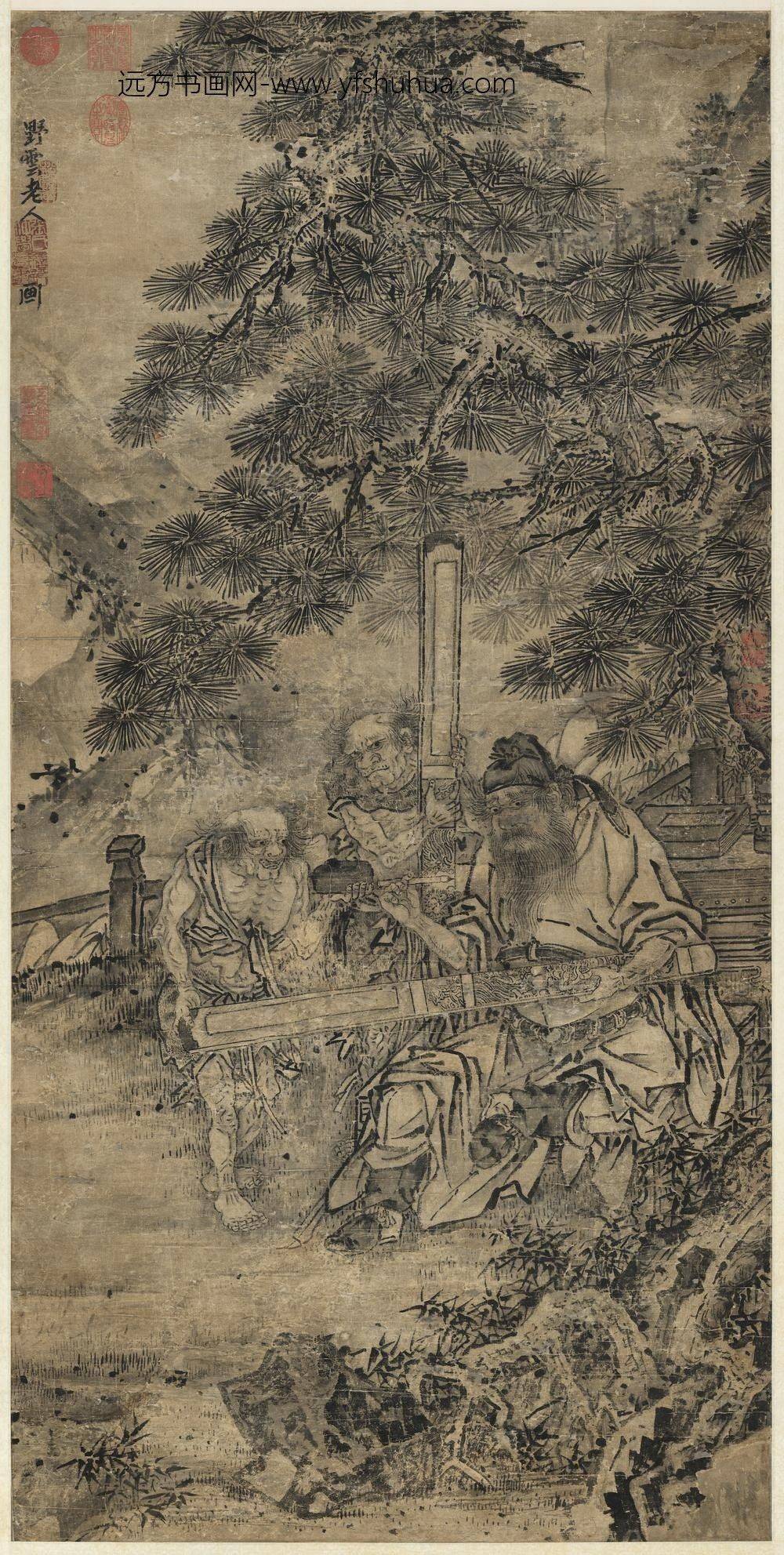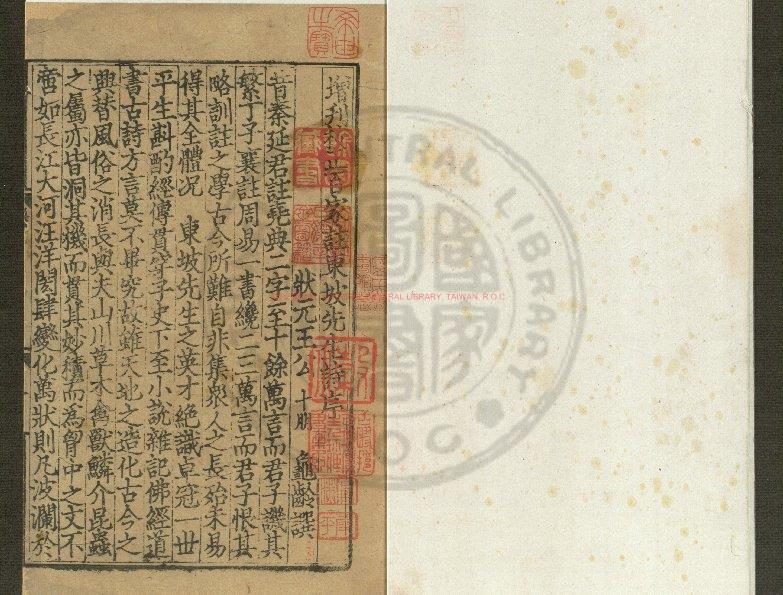【作品基本信息】
| 作者 | 张仲学 |
| 品名 | 画岁朝钟馗图轴 |
| 朝代 | 清代 |
| 文件大小 | 18.04MB |
| 分辨率(DPI) | 300×300 |
| 像素大小 | 1741×3454 |
| 尺寸(CM) | 14.74×29.24 |
| 作品数量 | 1 |
| 作品收藏 | 台北故宫博物院 |
| 图片格式 | 默认提供TIF和JPG两个版本 |
基本数据
| 藏品类型 | 绘画 |
| 品名 | 清张仲学画岁朝钟馗 轴 Chung K’uei |
| 分类 | 绘画 |
| 作者 | 张仲学 |
| 数量 | 一轴 |
典藏尺寸
| 【位置】 | 【尺寸】(公分) |
| 本幅 | 127.5×63.5 |
质地
| 【质地位置】 | 【质地】 |
| 本幅 | 纸 |
题跋数据
| 【题跋类别】 | 【作者】 | 【位置】 | 【款识】 | 【书体】 | 【全文】 |
| 作者款识 | 张仲学 | 本幅 | 行书 | 野云老人画。 | |
| 印记: 张氏仲学、缮评图画、松鹤轩 |
|||||
印记资料
| 【印记类别】 | 【印记】 |
| 鉴藏宝玺 | 嘉庆御览之宝 |
| 鉴藏宝玺 | 宝笈三编 |
| 鉴藏宝玺 | 宣统御览之宝 |
| 鉴藏宝玺 | 嘉庆鉴赏 |
| 鉴藏宝玺 | 石渠宝笈 |
| 鉴藏宝玺 | 三希堂精鉴玺 |
| 鉴藏宝玺 | 宜子孙 |
主题
| 【主题类别】 | 【主题(第一层)】 | 【主题(第二层)】 | 【主题说明】 |
| 其他主题 | 树木 | 竹 | |
| 其他主题 | 建筑 | 栏杆 | |
| 其他主题 | 器用 | 家具(屏风) | 桌、椅 |
| 其他主题 | 器用 | 宗教器用 | 桃符 |
| 其他主题 | 器用 | 文房用具 | 笔、砚 |
| 主要主题 | 节令与二十四节气 | 年节 | |
| 其他主题 | 建筑 | 庭院 | |
| 次要主题 | 树木 | 松 | |
| 主要主题 | 佛道人物 | 鬼怪 | 鬼二 |
| 主要主题 | 佛道人物 | 钟馗 |
技法
| 【技法】 | 【技法细目】 |
| 写意 | |
| 皴法 | |
| 皴法 | 斧劈皴 |
| 人物衣纹描法(粗细线条) |
参考数据
| 【类别】 | 【参考数据】 |
| 收藏着录 | 石渠宝笈三编(延春阁),第五册,页2395 |
| 收藏着录 | 故宫书画录(卷八),第四册,页115 |
| 收藏着录 | 故宫书画图录,第十二册,页343-344 |
| 内容简介(中文) | 张仲学,生卒年里不详。 本幅画岁除时节,钟馗搦管书桃符。桃木自古即被视同可以制鬼避邪的灵物。汉代,则发展成以桃木雕制神荼、郁垒像,挂于门旁抵御凶邪的习俗。魏晋南北朝之际,演变为在桃木板上书写神荼、郁垒的名字,名之曰「桃符」。五代后蜀,宫廷里已开始于桃符上题写联语,形如后世的春联形式。至若在新春画钟馗像,则渊源自唐代古风。张仲学此作将钟馗与桃符予以巧妙结合,或即由此衍生而得,惟通幅笔致劲利,风格略近于明代浙派。 |
| 内容简介(英文) | Chung K’uei on a New Year’s Day Chang Chung-hsueh Ch’ing Dynasty (1644-1911) Biographical information concerning Chang Chung-hsueh is lacking. As indicated by the title, the time for this painting is given as the lunar New Year. Chung K’uei sits holding an ink-laden brush ready to inscribe a peachwood charm. A demon holds the other end and another stands behind. Since antiquity, peachwood charms have been used to drive away evil spirits. Starting in the Han dynasty (206 BC-220AD), the custom of carving images of the guardian door gods Shen-t’u and Yu-lu in peachwood and hanging them on either side of front doors to dispel evil spirits began. In the Six Dynasties (220-589), it became customary to write the names of Shen-t’u and Yu-lu on planks of peachwood, becoming known as “peachwood charms.” By the Five Dynasties (907-960), it was already tradition to write couplets on peachwood charms and hang them in the palace, much like modern couplets of New Year calligraphy on red paper. Painting images of Chung K’uei originated in the T’ang (618-907). In this unique painting, Chang Chung-hsueh appears to be the first to have skillfully combined the above two traditions into one. The style appears similar to that of Che School painters of the Ming (1368-1644). |
| 参考书目 | 1.刘芳如,〈清张仲学画岁朝钟馗〉,收入国立故宫博物院编辑委员会编,《迎岁集福 — 院藏钟馗名画特展》(台北:国立故宫博物院,1997年二月初版一刷),页153-154。 |
【作品展示】





